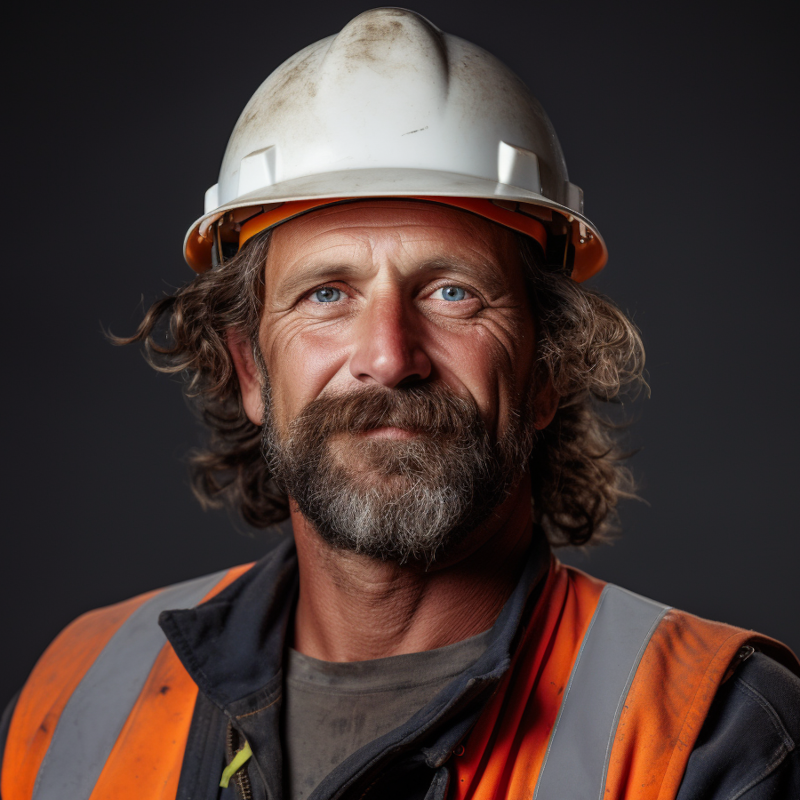


Engineering design is the backbone of innovation, encompassing the process of conceiving, planning, and creating solutions to complex problems. Whether you're designing a new product, system, or structure, the principles of engineering design shape the world around us. Here's a guide with useful tips to elevate your engineering design process, fostering creativity, efficiency, and excellence in every project.
Define Clear Objectives and Requirements: The Foundation of Design
Clear Project Scope: Begin with a well-defined project scope that outlines the objectives, constraints, and desired outcomes. A clear understanding of what needs to be achieved lays the foundation for effective design.
Comprehensive Requirements Analysis: Conduct a thorough analysis of project requirements. Understand the functional, performance, and environmental constraints that will influence the design. Clearly defined requirements serve as the guiding principles throughout the design process.
Embrace the Iterative Design Process: Continuous Refinement
Prototype and Test Early: Embrace the iterative nature of design by creating prototypes and conducting tests early in the process. This allows for rapid feedback and refinement, leading to a more robust final design.
Learn from Failures: Failure is an inherent part of innovation. Instead of viewing failures as setbacks, consider them as opportunities to learn and improve. Analyze failures, understand the root causes, and iterate on the design to overcome challenges.
Prioritize User-Centered Design: Design with the End User in Mind
Understand User Needs: In projects involving consumer products or systems, understanding user needs is paramount. Conduct user interviews, surveys, and usability studies to gather insights that inform the design process.
Iterate Based on Feedback: Collect feedback from end users at various stages of the design process. Use this feedback to refine and optimize the design to better meet user expectations and preferences.
Leverage Advanced Tools and Technology: Enhancing Design Efficiency
Computer-Aided Design (CAD) Software: Utilize CAD software for detailed design, modeling, and simulation. These tools enable engineers to visualize concepts, test virtual prototypes, and iterate rapidly.
Simulation and Analysis Tools: Leverage simulation and analysis tools to assess the performance, structural integrity, and behavior of the design under different conditions. This helps in identifying potential issues before physical prototypes are built.
Foster Cross-Disciplinary Collaboration: Harnessing Diverse Expertise
Multidisciplinary Teams: Form multidisciplinary teams that bring together experts from various fields. Collaborative input enhances the design process by incorporating diverse perspectives and expertise.
Effective Communication: Establish clear communication channels within the team. Efficient communication ensures that everyone is aligned with project goals, reduces misunderstandings, and accelerates decision-making.
Consider Sustainability in Design: Engineering for the Future
Life Cycle Analysis: Integrate sustainability considerations by conducting life cycle analyses. Assess the environmental impact of the design from material extraction to end-of-life disposal and identify opportunities for improvement.
Efficient Resource Utilization: Optimize the use of materials and resources to minimize waste and environmental impact. Designing for sustainability involves creating products and systems that are resource-efficient and environmentally responsible.
Stay Informed on Emerging Technologies: Continuous Learning
Stay Current with Trends: Keep abreast of emerging technologies and industry trends. Continuous learning and staying informed about advancements in materials, processes, and methodologies enhance the depth and innovation of your designs.
Professional Development Opportunities: Invest in professional development opportunities, workshops, and conferences. Engaging with the broader engineering community provides exposure to new ideas, methodologies, and best practices.
Document and Review: Building a Design Knowledge Base
Comprehensive Documentation: Document the design process thoroughly, including decisions, iterations, and the rationale behind design choices. This documentation serves as a valuable knowledge base for future projects and facilitates collaboration.
Regular Design Reviews: Conduct regular design reviews with team members to assess progress, identify potential challenges, and gather feedback. Design reviews promote transparency, accountability, and continuous improvement.
Can we say that an engineering designer and an interior/exterior designer are in the same category in the construction sector?
While both engineering designers and interior/exterior designers may work in the construction sector, their roles and responsibilities are typically quite different.
Engineering designers are responsible for creating technical drawings, plans, and specifications for buildings and structures, focusing on the functional and structural aspects of the project. They may work on a wide range of construction projects, from buildings and bridges to tunnels and dams.
On the other hand, interior and exterior designers focus on the aesthetic aspects of a building, including the selection of colors, materials, and furnishings, and the arrangement of space to create a visually appealing and functional environment. They may work on residential, commercial, or public projects, and may collaborate with architects, contractors, and other construction professionals to bring their designs to life.
While there may be some overlap in the skills and knowledge required for these roles, they are generally considered to be distinct disciplines within the construction industry.
Engineering designers are responsible for creating technical drawings, plans, and specifications for buildings and structures. Their primary focus is on the functional and structural aspects of the project, ensuring that the design meets all relevant codes, regulations, and safety standards.
Some of the specific responsibilities of an engineering designer may include:
Collaborating with architects, contractors, and other construction professionals to develop and refine project plans and specifications.
Conduct site visits and surveys to gather information about existing structures and conditions that may impact the design.
Creating detailed drawings and schematics using computer-aided design (CAD) software, ensuring that they accurately represent the intended design and all necessary dimensions and specifications.
Analyzing and testing design concepts to identify potential weaknesses or areas for improvement.
Ensuring that the design meets all applicable building codes, regulations, and safety standards.
Communicating with clients and stakeholders to provide updates on the project and address any questions or concerns.
Overseeing the construction process to ensure that the design is implemented correctly and all necessary quality control measures are in place.
Monitoring project progress and budget to ensure that the project is completed on time and within budget.
Here are some steps to help you find the best engineering designer for your project:
Identify your project needs: Before you start looking for an engineering designer, it's important to clearly identify your project needs, goals, and requirements. This will help you to narrow down your search and find designers who have experience and expertise in the specific areas you need.
Research potential candidates: Once you know what you're looking for, you can start researching potential candidates. You can use online directories, industry associations, or referrals from colleagues to create a shortlist of potential candidates.
Check qualifications and credentials: It's important to ensure that the engineering designer you choose has the right qualifications and credentials to work on your project. Check their education, professional affiliations, licenses, and certifications to ensure they meet industry standards and requirements.
Look at their portfolio and experience: A good engineering designer should have a portfolio of their previous work that demonstrates their expertise and experience. Look for projects that are similar to yours and ask for references to speak to previous clients.
Conduct interviews: Once you have a shortlist of potential candidates, conduct interviews to learn more about their experience, approach, and work style. Ask questions about their previous projects, communication style, and how they would approach your project.
Evaluate their proposals: After conducting interviews, ask the engineering designers to provide you with a proposal outlining their approach, fees, and timeline. Review these carefully and evaluate them against your project requirements and budget.
There are many well-known engineering design works that have been implemented worldwide. Here are a few examples:
The Burj Khalifa: The tallest building in the world, located in Dubai, UAE, was designed by Skidmore, Owings & Merrill.
The Channel Tunnel: A 31-mile undersea tunnel that connects England and France was designed by a consortium of engineering firms led by Eurotunnel.
The Millau Viaduct: A cable-stayed bridge located in southern France that spans the Tarn River was designed by French structural engineer Michel Virlogeux and British architect Norman Foster.
The Hoover Dam: A concrete arch-gravity dam on the Colorado River, located on the border between the US states of Nevada and Arizona, was designed by a team of engineers led by John L. Savage.
The Panama Canal: A 48-mile-long artificial waterway in Panama that connects the Atlantic and Pacific oceans was designed by a team of engineers led by John Frank Stevens.
The Golden Gate Bridge: An iconic suspension bridge located in San Francisco, California, was designed by a team of engineers led by Joseph Strauss.
The Petronas Twin Towers: These twin towers, located in Kuala Lumpur, Malaysia, were once the tallest buildings in the world and were designed by Argentine architect César Pelli.
The Sydney Opera House: This iconic performing arts center in Sydney, Australia, was designed by Danish architect Jørn Utzon.
The Shanghai Tower: The second-tallest building in the world, located in Shanghai, China, was designed by Gensler and developed by the Shanghai Tower Construction & Development Co.
The London Eye: This giant Ferris wheel on the South Bank of the River Thames in London, UK, was designed by architects Frank Anatole, Nic Bailey, Julia Barfield, Steve Chilton, Malcolm Cook, David Marks, and Mark Sparrowhawk.
The Atomium: This unique building in Brussels, Belgium, was designed by architects André Waterkeyn and André and Jean Polak for the 1958 World's Fair.
The Palm Islands: These artificial islands off the coast of Dubai, UAE, were designed by Dutch firm Van Oord and Nakheel Properties.
These impressive engineering design works showcase the creativity and innovation of the field and continue to inspire awe and wonder around the world.
Some engineering design works may have inherently higher risks due to the nature of their function or the environment they operate in. For example, designs for bridges, dams, or nuclear power plants are considered high-risk due to the potential consequences of failure or accidents. It's the responsibility of the engineering designers to ensure that safety measures are incorporated into the design to mitigate these risks as much as possible.
There are many critical engineering design works that are well-known worldwide. Here are a few examples:
The Panama Canal: This engineering marvel allows ships to travel between the Atlantic and Pacific Oceans, saving them the time and expense of having to navigate around South America.
The Burj Khalifa: This skyscraper in Dubai is the tallest building in the world and required innovative engineering solutions to withstand the extreme weather conditions in the region.
The Large Hadron Collider: This particle accelerator in Switzerland is the largest and most powerful in the world, allowing scientists to study the fundamental particles that make up the universe.
The International Space Station: This collaboration between multiple countries required complex engineering designs to create a habitable environment in space.
The Three Gorges Dam: This hydroelectric power station in China is the largest in the world and required extensive engineering design to harness the power of the Yangtze River.
These are just a few examples of the many critical engineering design works that have made significant impacts on the world.
Some examples of engineering design work that are considered creative or whimsical:
The Dancing House in Prague, Czech Republic: This building, also known as the Fred and Ginger building, was designed by architects Vlado Milunić and Frank Gehry to resemble a couple of dancing.
The Longaberger Basket Building in Ohio, USA: This seven-story building was designed to look like a giant picnic basket, complete with handles and a woven exterior.
The Piano and Violin Building in Huainan, China: This building was designed to look like a giant piano and violin, with the two structures connected by a glass atrium.
The Crooked House in Sopot, Poland: This building was designed to resemble a fairytale house, with a curved and sloping roofline.
The Atomium in Brussels, Belgium: This iconic structure was built for the 1958 World's Fair and features nine interconnected spheres, representing the atoms of an iron crystal magnified 165 billion times.
These engineering design works may not have the same level of critical importance or functionality as other works, but they demonstrate the creativity and ingenuity of designers and architects in creating unique and memorable structures.
Mastering engineering design involves a combination of structured processes, creativity, and a commitment to continuous improvement. By embracing clear objectives, user-centered principles, and the latest technologies, engineers can elevate their designs to new heights. The iterative nature of design, coupled with a focus on sustainability and interdisciplinary collaboration, ensures that each project is not just a solution to a problem but a testament to the art and science of engineering design.
Sincerely yours,

We use cookies
We use cookies and other tracking technologies to improve your browsing experience on our website, to show you personalized content and targeted ads, to analyze our website traffic, and to understand where our visitors are coming from. Privacy Policy.